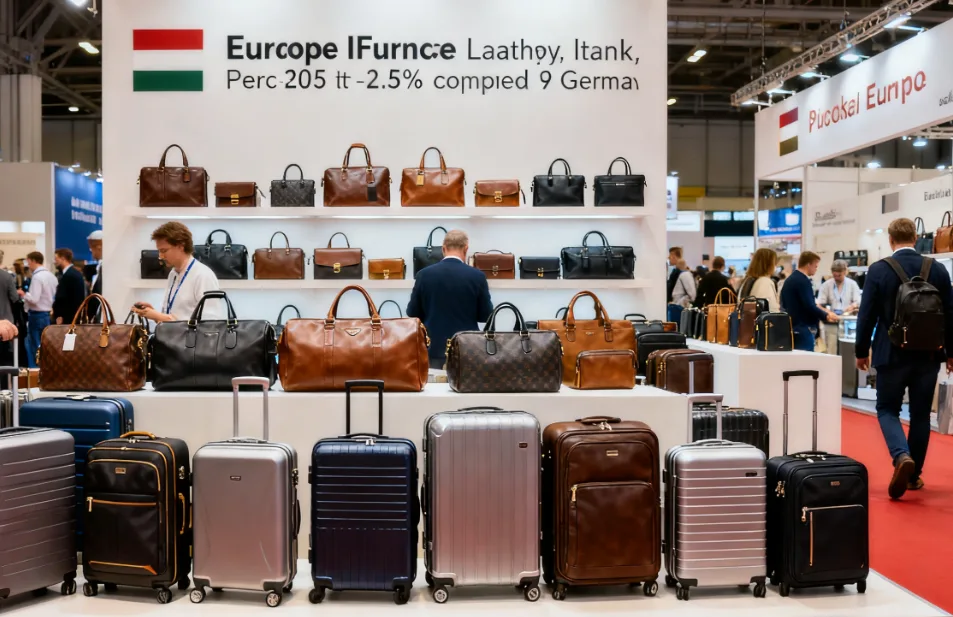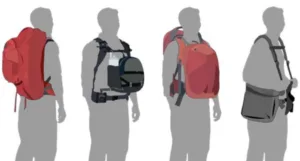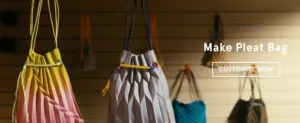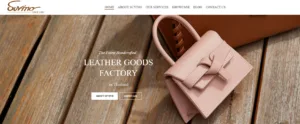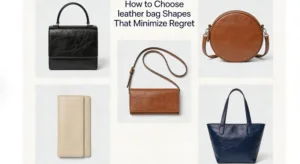The global leather luggage market is on a steady growth path, fueled by the revival of international travel, rising demand for premium products, and the increasing popularity of both luggage sets and lightweight luggage that combine style with practicality. From London Fog luggage and Swiss Gear luggage in Europe to innovative Asian players like Nobl luggage and Lojel luggage, consumer choices are becoming more diverse and brand-driven.
When travelers shop for the right suitcase, they no longer look only at size or durability. Accessories such as personalized luggage tags, luggage straps, and luggage covers have become must-haves, while brands like Ricardo luggage, Quince luggage, and Lucas luggage are competing to offer stylish yet functional solutions. At the same time, the rise of luggage repair services and features like luggage trackers highlight a growing awareness of sustainability and long-term usability.
Comparing Europe and Asia is essential, as these two regions represent very different consumer habits, cultural preferences, and market scales. European buyers are more loyal to established luxury names such as Gucci luggage, while Asian markets show rapid adoption of trendy designs, multifunctional products like underseat luggage, and value-driven options including 2 piece luggage sets and 3 piece luggage sets.
This article explores the 2026 trends in leather luggage, with a focus on Europe vs Asia. The goal is to help brands, retailers, and OEM/ODM manufacturers identify growth opportunities, adjust strategies, and better position their offerings in these dynamic regions.
Contents
Leather Luggage Global Market Overview (2026 Outlook)
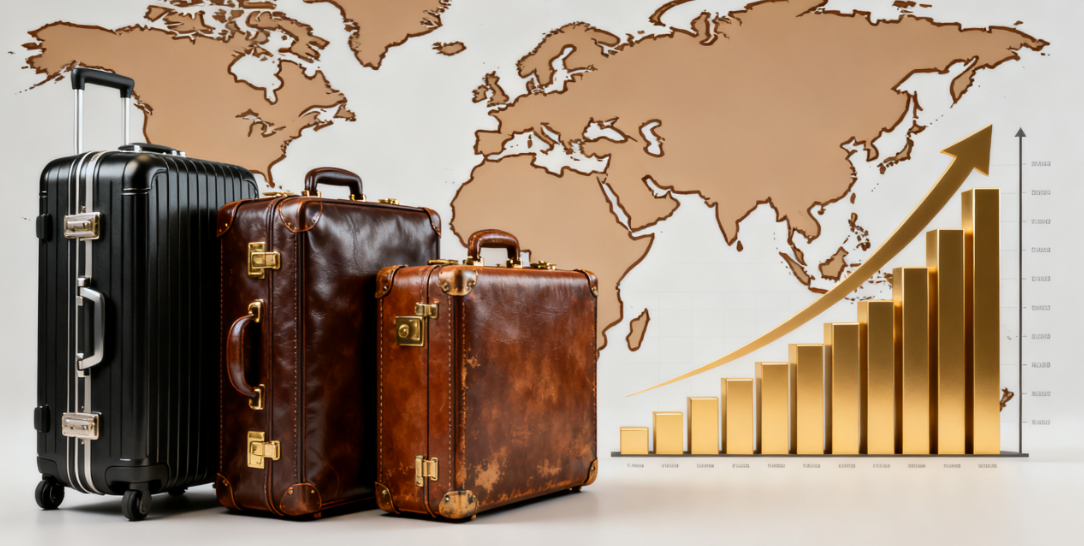
According to leading economic analysts, “the luggage industry is no longer just about utility — it has become a reflection of lifestyle, sustainability, and technology integration, with leather luggage positioned at the premium end of this transformation.” Their forecast underscores a strong recovery of the global travel economy and the resulting demand for high-quality travel goods.
By 2026, the global leather luggage market is projected to reach USD 28–30 billion, with a compound annual growth rate (CAGR) of approximately 5.2%. This growth is largely driven by three key factors:
- International travel rebound: As tourism and business travel surpass pre-pandemic levels, demand for durable and stylish luggage continues to accelerate.
- Premiumization of consumer demand: Travelers are increasingly choosing high-end products such as Italian leather luggage, luxury luggage sets, and branded items like Gucci luggage or London Fog luggage, reflecting status and long-term value.
- Sustainable materials and conscious consumption: Eco-friendly alternatives, including vegan leather and recycled composites, are gaining traction among environmentally aware consumers, especially in Europe.
From a regional perspective, Europe and Asia remain the two largest and fastest-evolving markets:
- Europe is expected to account for 32–34% of global market share in 2026, led by luxury hubs such as Italy, France, and the UK. The strong presence of premium brands and consumer preference for sustainable leather goods drive steady growth in the high-end segment.
- Asia-Pacific is projected to capture 36–38% of global sales, making it the largest regional market. Rising disposable income, the boom of e-commerce channels, and the growing middle-class demand for lightweight luggage, underseat luggage, and versatile 3 piece luggage sets will be key growth engines.
From a manufacturing perspective, three major trends are reshaping the market:
- Smart luggage integration: GPS-enabled luggage trackers, USB charging ports, and security-enhanced luggage locks are being adopted across mid-to-high-end product lines.
- Lightweight engineering: Innovations in structure and material allow large luggage and 28-inch luggage to remain sturdy yet significantly lighter, reducing airline surcharges and enhancing mobility.
- Sustainable manufacturing practices: More OEM/ODM factories are investing in eco-friendly production lines, offering brands custom luggage tags, luggage covers, and modular designs that extend product life cycles and reduce waste.
Together, these developments suggest that the leather luggage sector will not only expand in volume but also evolve in sophistication, positioning itself as a convergence point for fashion, functionality, and sustainability.
Regional Market Insights
▶ Europe Market Outlook
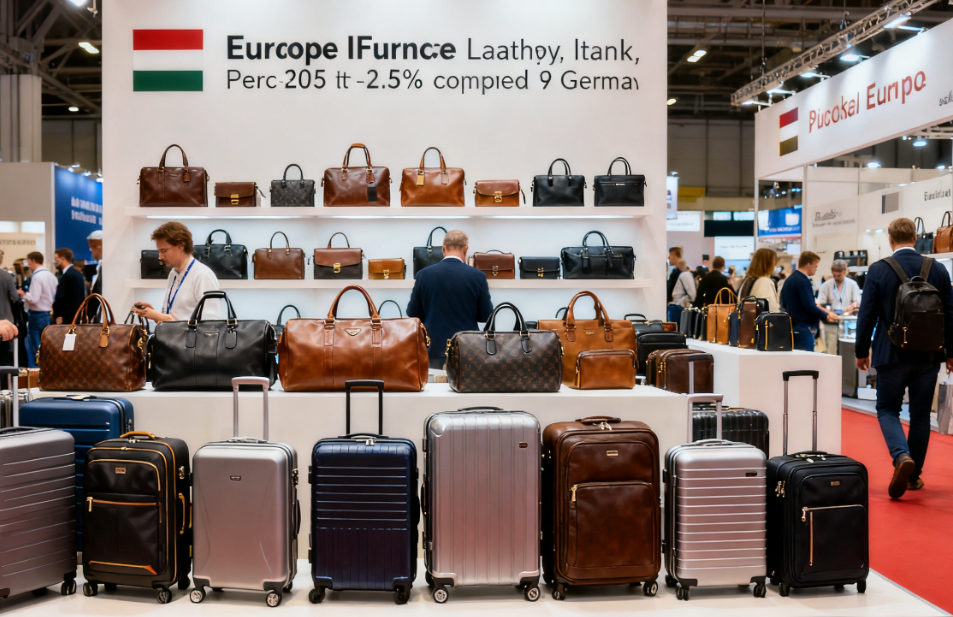
The European leather luggage market is expected to maintain a 6–6.5% CAGR from 2025 to 2030. Market segmentation highlights:
- Western Europe (France, Italy, Germany): Luxury brands dominate, emphasizing traditional craftsmanship and premium Italian/French leather. Consumers are willing to pay for design, brand value, and sustainability certifications, favoring luxury leather luggage, Tumi luggage, and Samsonite luggage.
- Northern Europe (Sweden, Denmark, Norway): Smaller market size but high adoption of eco-friendly leather alternatives and circular economy practices. Preferences lean toward minimalist and lightweight luggage designs.
- Eastern Europe (Poland, Czech Republic, Hungary): Rapid growth in mid-range segments, price-sensitive consumers seek durable and functional leather luggage.
Key drivers in Europe include strong influence of local and international leather brands, innovation in products and technology, growing online commerce and social media presence, and high fashion consciousness, especially in Italy and France. Price ranges mainly fall between USD 500–1,500, with boutiques and department stores serving as primary retail channels.
Related Reading:
- Top Italian Leather Luggage Brands You Should Know
- Why France Leads in Luxury Travel Goods
▶ Asia-Pacific Market Insights
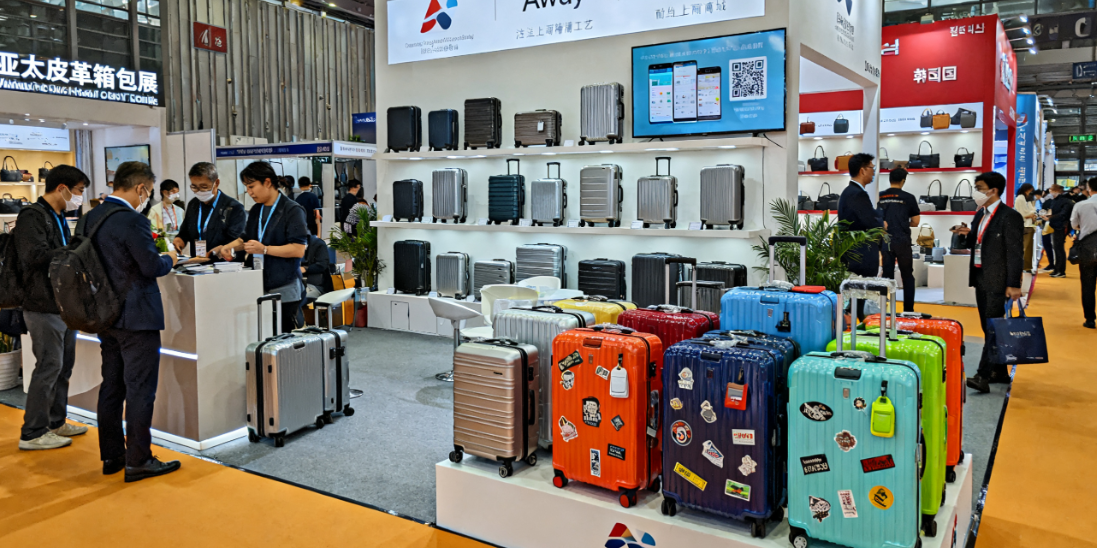
By 2026, the Asia-Pacific region is expected to become the largest consumer of leather luggage globally, capturing 36–38% market share. Market segmentation shows:
East Asia (China, Japan, South Korea):
- China: Rapid growth in mid-to-high-end segments, consumers seek stylish yet functional designs. Online sales dominate, with brands like Away luggage and Calpak luggage gaining popularity.
- Japan: Focus on fine craftsmanship and minimalist design, with strong brand loyalty. Preferences include durable and lightweight luggage.
- South Korea: Young consumers drive demand for trendy and customizable options, emphasizing multi-functional luggage.
Southeast Asia (Thailand, Vietnam, Indonesia): Travel-driven demand with a strong share of mid-to-low-end products. Eco-friendly materials and design are becoming differentiators.
South Asia (India, Bangladesh): Large market potential, growing mid-range demand. Local production and exports thrive, driving OEM/ODM order growth.
Growth in Asia is fueled by young consumers, fast fashion trends, e-commerce platforms (Tmall, Shopee, Amazon Asia), and the rising middle class. Price ranges cover under USD 100 to USD 500, emphasizing value, multi-functionality, and brands like Travelpro luggage and Victorinox luggage in the mid-to-high-end market.
Related Reading:
- Why Asia-Pacific Leads the Future of Leather Luggage
- E-commerce Trends Reshaping the Travel Bag Market in China
Custom Leather Luggage in Europe vs Asia: Key Differences
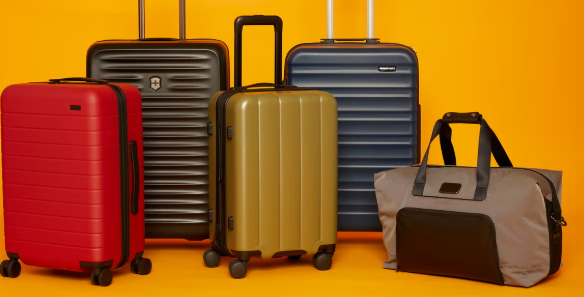
The European and Asia-Pacific leather luggage markets exhibit distinct characteristics in design preferences, sustainability awareness, pricing strategies, and distribution channels. Understanding these differences is essential for brands and manufacturers looking to expand globally. The following table summarizes the key distinctions:
| Feature | Europe | Asia-Pacific | Relevant Keywords / Examples |
|---|---|---|---|
| Design & Style | Classic, luxury, timeless aesthetics | Trendy, youthful, fashion-forward | Tumi luggage, Samsonite luggage, Away luggage, Calpak luggage |
| Sustainability | High priority; eco-certifications matter | Growing awareness; market in transition | Sustainable luggage, vegan leather luggage, eco-friendly travel bags |
| Pricing Strategy | Predominantly high-end; luxury segments dominate | Broad range; entry-level to mid-high end | Luxury leather luggage, mid-range luggage sets, and custom luggage tags |
| Distribution Channels | Boutique stores, department stores, selective online | E-commerce platforms dominate (Tmall, Shopee, Amazon Asia) | Online luggage stores, cross-border e-commerce, personalized luggage covers |
| Consumer Preferences | Brand loyalty, craftsmanship, durability | Design, functionality, trendiness, price sensitivity | Gucci luggage, Delsey luggage, Travelpro luggage, Victorinox luggage |
| Product Features | Focus on premium leather, refined detailing | Focus on lightweight, multi-functional, customizable | Luggage wheels, GPS luggage trackers, luggage straps, 2/3 piece luggage sets |
Key Insights:
- European consumers prioritize craftsmanship, heritage brands, and luxury materials, while Asian consumers focus on value, design trends, and multi-functional features.
- Sustainability is a key differentiator in Europe, whereas Asian markets are gradually adopting eco-conscious preferences, presenting opportunities for custom eco-luggage.
- Distribution strategy should adapt regionally: premium boutiques for Europe vs e-commerce and cross-border platforms for luggage for Asia.
Opportunities for Brands & Manufacturers
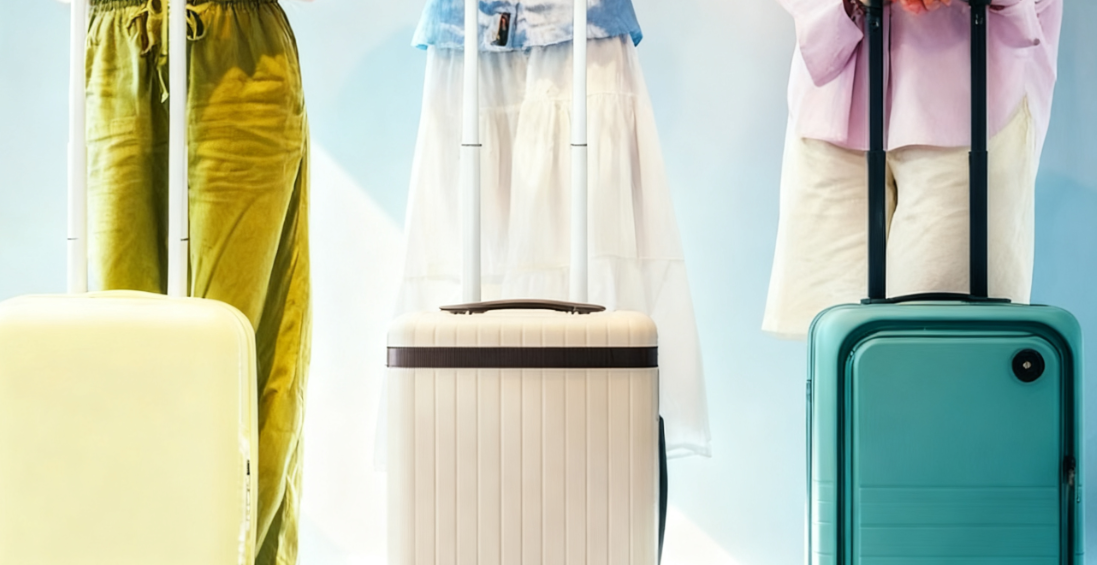
The global leather luggage market is entering a period of dynamic growth, driven by evolving consumer preferences, technological innovations, and regional market diversification. For brands and manufacturers, understanding these shifts is critical to capturing new opportunities and gaining a competitive edge. By strategically addressing regional demands in Europe and Asia-Pacific, companies can position themselves for long-term success.
Europe Market Opportunities
The European leather luggage market presents strong opportunities for brands targeting premium and luxury segments. Consumers increasingly value sustainable luggage, certified eco-friendly materials, and high-end craftsmanship. Brands that offer luxury leather luggage, custom luggage sets, or collaborations with established designers can capitalize on the growing demand for exclusivity and quality. Additionally, the rising interest in personalized luggage tags and high-end luggage accessories provides room for upselling and brand differentiation.
Asia-Pacific Market Opportunities
In Asia, the market is driven by rapidly growing middle-class consumers, fast fashion trends, and a preference for customizable, functional designs. Brands and manufacturers offering ODM/OEM services can respond to frequent product launches, multi-functional luggage, and design variations tailored to local tastes. Personalization features, such as custom luggage tags, luggage covers, and modular compartments, are increasingly attractive to consumers in China, Japan, South Korea, and Southeast Asia.
Implications for Manufacturers
For manufacturers, these trends highlight the importance of flexible production lines, scalable customization options, and cross-border collaboration. Adopting smart production techniques, lightweight and eco-friendly materials, and integrating technology such as GPS luggage trackers or luggage locks can help meet diverse regional demands. OEM/ODM manufacturers that can combine design innovation, sustainable materials, and efficient luggage supply chain management are best positioned to serve both European luxury markets and fast-growing Asian markets.
Conclusion
In 2026, the leather luggage market continues to evolve with clear regional distinctions. Europe remains a stronghold for luxury leather luggage, premium luggage sets, and consumers seeking craftsmanship, sustainability certifications, and brand heritage. Meanwhile, Asia-Pacific offers immense growth potential driven by e-commerce luggage platforms, fast fashion trends, and demand for customizable, multi-functional luggage.
For brands and OEM/ODM manufacturers, these trends highlight the importance of:
- Flexible production capable of delivering both high-end luxury and mid-range products.
- Scalable customization of leather luggage options, such as personalized luggage tags, luggage covers, and modular compartments.
- Cross-border collaboration to efficiently serve diverse regional markets.
By leveraging these insights, brands can strengthen their market positioning, accelerate product launches, and capture growth opportunities in both Europe and Asia. Companies looking to expand globally should consider partnering with experienced leather luggage manufacturers that offer OEM/ODM services, smart production techniques, and sustainable materials solutions.
Reach out to professional manufacturers like Sunteam or other global leather luggage partners to explore custom luggage solutions, luxury travel accessories, and innovative personalized luggage products for your brand’s success in 2026 and beyond.

